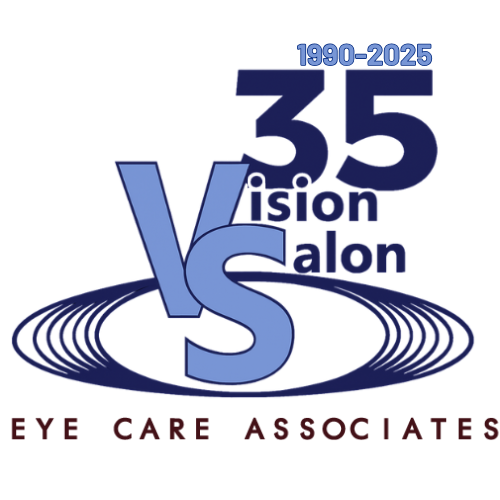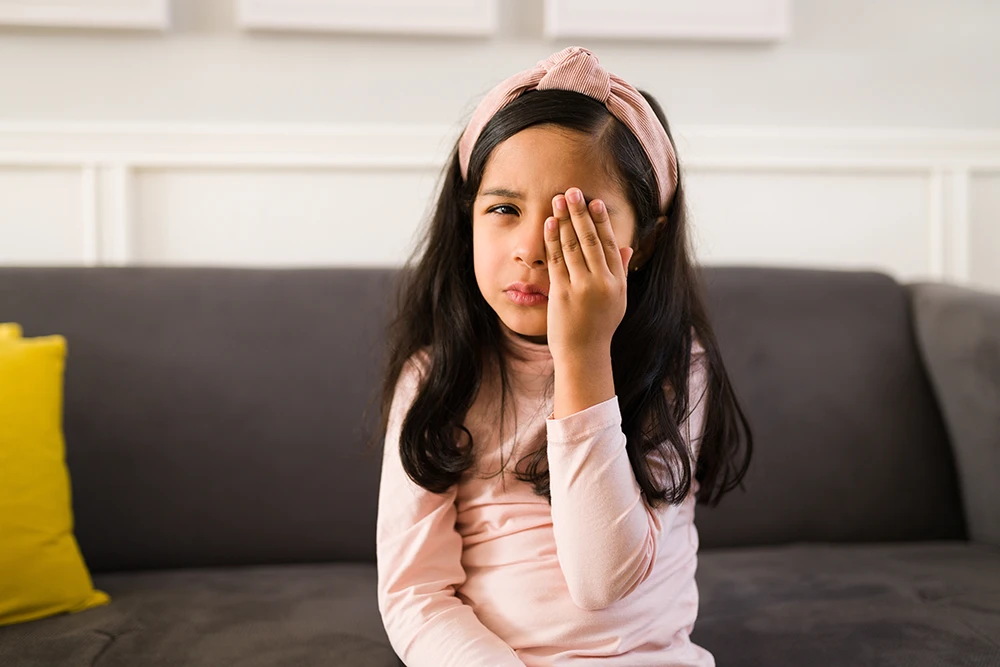Children spend a lot of time playing and interacting closely with others, which makes it easy for germs to spread. Because children sit close to each other and play together, they are more likely to catch common illnesses like colds, the flu, and eye infections such as pink eye.
Understanding proper pink eye treatment and scheduling a comprehensive eye exam can help protect your child’s eye health. Keep reading to learn how to keep your child from getting pink eye, what to do if they have it, and how to stop it from spreading.
What is pink eye?
Conjunctivitis, commonly known as pink eye, is an eye infection that affects both adults and children.¹ The infection causes the eye’s blood vessels to dilate and swell, which leads to the eye taking on a pink or red color. If your child comes home from school with pink eye, there are different factors that could have caused it.
Pink eye causes
Many things can cause pink eye, including chemicals, wearing contact lenses, loose eyelashes, fungi, and pollution. However, the most common causes in adults and children are viruses, bacteria, and allergens.²
Viral conjunctivitis
A large number of viruses, such as adenoviruses, can cause pink eye.² Viral conjunctivitis is highly contagious, so if one child has it, it can easily spread to others through close contact or shared items.
Bacterial conjunctivitis
This type of pink eye is more common in children than in adults.² Bacterial conjunctivitis is caused by different bacteria found in the nose, when people cough or sneeze, and other respiratory-related germs.
If your child is prone to allergies, they might experience pink eye as a symptom. This type of pink eye, known as allergic conjunctivitis, isn’t contagious, and your child may contract it when outdoor pollen is high.
If your child has asthma, eczema, or hay fever, they’re more likely to get allergic conjunctivitis. Common allergens, such as pollen, dust mites, mold, and pet dander, can also cause this type of pink eye.²
Pink eye symptoms
Outside of swelling and the visual change of color in the white part of your child’s eyes, other pink eye symptoms include:
- Your child is producing more tears even if they’re not crying.
- Your child has pus or mucus discharge in their eyes.
- Your child wakes up with crust on their eyelids or lashes.
- Your child is also experiencing symptoms of a cold or flu.
- Your child is also experiencing allergy symptoms.
Pink eye treatment methods
Most cases of pink eye are mild and will go away without additional treatment. Over-the-counter products should be avoided until your child sees an eye doctor or healthcare provider for a proper diagnosis and treatment. You should bring your child to their healthcare provider for treatment if:
- They experience eye pain.
- Their vision remains blurry even after wiping away discharge and crust from their eyes.
- The red color worsens.
- Their symptoms get worse over time.
- They’re a newborn with pink eye.
Is pink eye contagious?
Not all types of pink eye are contagious. Viral and bacterial types are transmissible from person to person, but pink eye caused by allergies isn’t contagious.²
How to avoid pink eye when your child gets it
The best way to prevent your child from spreading pink eye to you, their friends, or teachers is by teaching good hygiene habits. Here are some tips to help your child recover without passing it on:
- Show your child how to wash their hands properly with soap and warm water.
- Remind them not to touch or rub their eyes because the pink eye can worsen.
- Use a clean washcloth each time you help them remove the discharge and crust from their eyes.
- Wash your child’s pillowcases and sheets using hot water and detergent.
- If your child wears corrective lenses, clean those regularly and wash your hands before and after doing so.
- Please remind your child not to share their personal items with their friends at school.
- If your child takes swimming lessons, don’t let them get in the water until after their pink eye is gone.
If you send your child to school while they have pink eye, notify their teacher so that extra precautions can be followed. The spread of pink eye can be limited if the proper steps are taken.
Keep your child’s eyes healthy
By practicing good hygiene and following these tips, you can help your child recover from pink eye while protecting those around them. If you’re ever unsure about symptoms or the best pink eye treatment, our eye doctors can help ensure your child’s eyes are healthy and healing properly.
References:





